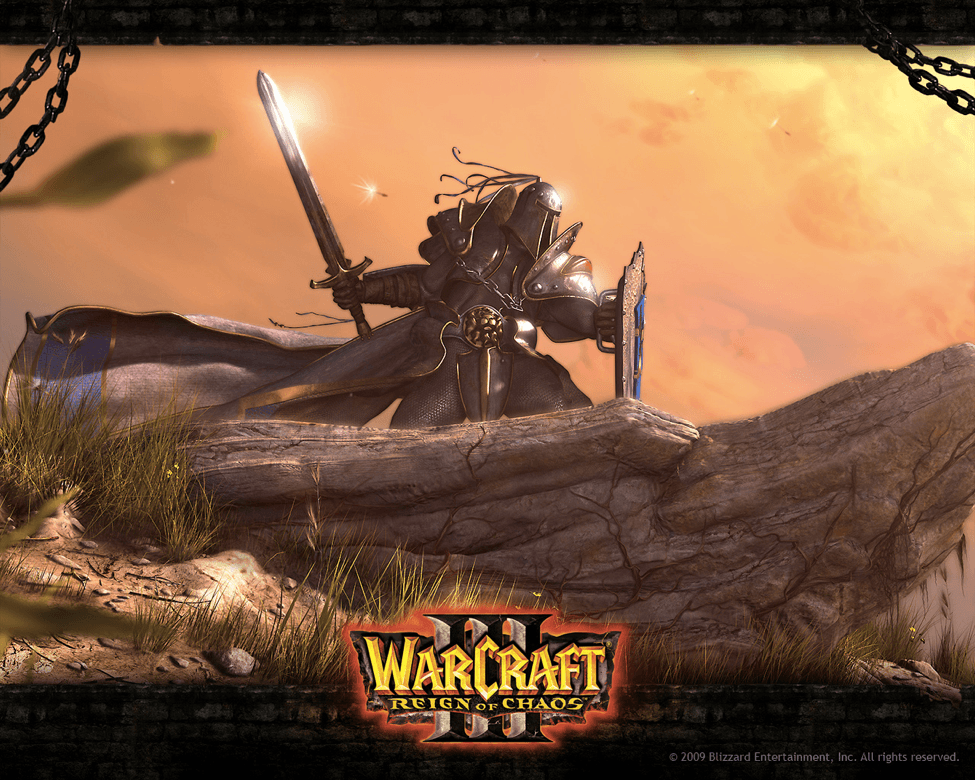Blizzard Entertainment: Burning Legion™ Enters Digital Age

How has digitization changed the business and operating models of one of the most successful video game developers in the world? Augmented reality and virtual reality are the next frontier of digital transformation. Can Blizzard stay relevant?
Prologue
Summer 2002. A teenager entered a Gamestop store. In front of him were knights on noble steeds, heroes and monsters clashing under light and darkness, and even pirates riding parrots. But the kid had his eye long fixated on the left corner of the store – in fact, he wished he had a Gryphon Rider or Staff of Teleportation to fly him over there. He finally arrived at the corner.
Shelf label: Blizzard Entertainment. Latest title: Warcraft III: Reign of Chaos (4 CD ROMs, playable on Windows XP)
Checked out of the store, he rushed home as if he was on a Potion of Acceleration. He had a summer of pure happiness as he resisted, in vain, the ultimate summoning by the Lich King.
Fast forward to 2016, the teenager has become a TOM blogger. Physical stores for video games are almost nowhere to be found. Gamers expect a new set of experiences and social interactions from a myriad of devices and form factors. Reality is virtualized and the world digitalized – so is Blizzard.
Evolution of Blizzard’s Business and Operating Models
Blizzard Entertainment is an American video game development company with four of the highly successful franchises in the gaming industry: WarCraft, Diablo, StarCraft, and Overwatch [1]. A pioneer in Real Time Strategy (RTS) and Action Role Play (RPG) games, Blizzard in its early days (1991 to 1996) had a retail-centric business model. It developed PC-only single-player titles and derived revenues from retail sales of physical “boxes” of games. Around the turn of the 20th century, the maturity of hardwired broadband internet access and local area networks (LAN) made peer-to-peer online gaming a growing trend in the gaming industry. In November 1996, Blizzard launched Battle.net as an online peer-to-peer gaming platform for its global user base, with more advanced features such as ladder ranking and in-game instant messaging introduced by subsequent releases. By 2008, Battle.net had morphed into a unified gateway to the Blizzard gaming experience, with functions spanning virtual stores, in-game purchasing and upgrades, digital downloading, and digital license management. With growing popularity of Software-as-a-Service (SaaS) cloud services and increased reliability of electronic payment handling platforms (e.g., Visa Checkout), Blizzard introduced digital-only subscription based games in its new massively multiplayer online role-playing (MMORPG) category, exemplified by the World of Warcraft series. Through the years, revenue streams of Blizzard have diversified to include: (1) digital subscription revenues, (2) digital sales and downloads of PC products, and (3) licensing revenue from third-party companies who distribute World of Warcraft in China and Taiwan [2].
Figure 1: Digital sales revenue surpassed two-thirds of all Activition Blizzard’s revenue in Q3 2014 [3]
The digitalization of the gaming industry, coupled with the advent of artificial intelligence, Web 2.0, and mobile technologies, has also transformed the operating model of Blizzard. In product development, Blizzard pioneered the use of AI in designing robust encounters with non-player characters (NPC). As a global player base challenges a popular NPC day in and day out, the machine learned NPC becomes “smarter and smarter,” sustaining the level of competitiveness and freshness of the gaming experience. In November 2016, Blizzard announced partnership with Google DeepMind to release StarCraft II as an AI research environment [4]. Extending beyond the PC form factor, Blizzard released the iOS and Android-compatible collectible card game (CCG) Hearthstone in 2014 as the first title in its mobile gaming portfolio. In February 2016, Activision Blizzard acquired King Digital, developer of the mobile franchise Candy Crush Saga, to further strengthen Blizzard’s capability and competitiveness in mobile game development [5]. In game deployment and testing, Blizzard engaged with a global online community to beta-test and even co-design [6] new ideas in fast iterations. Based on real-time user feedback, “hot fixes” and new stable releases were electronically patched to the Battle.net user clients in intervals of days and even hours.
Figure 2. Product co-development with the online gaming community. After a Hearthstone enthusiast posted his own design of 300 new cards for the digital card game on Reddit, Ben Brode, Chief Designer of Hearthstone, invited the Reddit user to join the Hearthstone design team.
Riding the Digital Wave Forward
At the 2016 HBS Tech Conference, Brendan Iribe, founder and CEO of Oculus VR, considered augmented reality and virtual reality (AR/VR) the “ultimate platform” of future gaming. Despite being an established developer of 3D gaming experiences and contents, Blizzard has yet to demonstrate capabilities and momentum in developing games that cross the boundaries of real and virtual worlds. With AR/VR technologies at the bleeding edge of digital transformation, the following steps are recommended for Blizzard to scope out future gaming experiences that continue to catch the hearts and souls of the next generation of gamers.
- Diversify device compatibility to include consoles and AR/VR devices for existing titles and future franchises
- Develop technical capability of parsing and integrating end-point sensory data (e.g., from gesture tracking and eye tracking devices) into native gaming narratives and interactions
- Transform the contents/storylines of existing hits (e.g., the Warcraft franchise) into “destination VR” experiences in partnership with the motion picture and entertainment industry
(795 words)
Sources
1. Activision Blizzard Announces Better-Than-Expected and Record Third Quarter 2016 Financial Results (retrieved online)
2. Marketing, Sales, and Distribution of ATVI (retrieved online)
3. http://www.fool.com/investing/general/2014/11/06/1-huge-trend-thats-driving-activision-blizzards-pr.aspx
4. DeepMind and Blizzard to release StarCraft II as an AI research environment (retrieved online)
5. Blizzard Press Release: http://investor.activision.com/releasedetail.cfm?releaseid=956435
6. https://www.reddit.com/r/hearthstone/comments/4oa362/go_west_young_brode_a_300card_fanmade_expansion/






Well met, Rexxar. I am unconvinced that Blizzard Entertainment (and the ultimate parent company Activision Blizzard) is going to make any major inroads in augmented reality/virtual reality (AR/VR) in the foreseeable future. The current AR/VR ecosystem is still very fragmented. Gio Hunt, Executive Vice President of Corporate Operations at Blizzard Entertainment, said in an interview during Blizzard’s annual gaming convention that “There is no [single] VR platform today; there are actually several, and they’re all competing with one another. So there’s not even a standard for what VR or AR means…”[1] In other words, AR/VR is still in the very early stage of the product development funnel. You mentioned in your post that Activision Blizzard acquired King Digital in February 2016. That seems to be more indicative of the company’s strategy (at least in the immediate future) going forward – focusing on mobile and the huge market of casual gamers.
References
[1] Keach, Sean, Trusted Reviews: “Blizzard ‘looking at’ virtual reality games, but no Warcraft VR plans right now,” November 8, 2016
There is a lot of chatter about VR being the future of gaming, but I think that there are huge challenges in getting the userbase and hardware ubiquity that is required. For example, the experience of using VR in the kind of ‘binge’ sessions that you describe from your summer youth is not very enjoyable, with the equipment being bulky and often inducing motion sickness. [1] Instead, I think these firms should focus on growing the business in a pretty straight-forward way, thinking about whether they should focus on countries already buying a lot of their product or instead trying to build new markets elsewhere. [2] Deploying capital into VR looks like a waste of time when they could catch up later by doing the kind of acquisitions you mentioned above in the mobile space.
But if LucasArts makes a game where I can become a Jedi Knight, all bets are off.
[1] https://www.linkedin.com/pulse/mainstreaming-virtual-reality-mapping-road-ubiquity-call-jason-pace
[2] http://venturebeat.com/2014/06/24/gamer-globe-the-top-100-countries-by-2014-game-revenue/
VR is certainly a very hot topic today, with old and new media companies alike touting their VR initiatives, acquisitions, etc. That being said, we are a very long ways off from VR being a widely consumed product. Hardware is too expensive today and the technology still too new for VR to be a meaningful avenue of growth, at least for some time. What’s interesting is that Blizzard actually seems to have weathered the digital storm quite well. Rather than pouring resources into expensive and potentially distracting new products like VR, the company should continue to expand its current digital offerings and worlds, focusing on developing the next big game that can tie into its already large digital network.
AR/VR is indeed expected to change our gaming experience going forward. However, major AR/VR companies are still operating in uncharted waters and there is no consensus on which technology (ies) is/are going to dominate the market in the future. Hence, I would argue that in the short-term Blizzard needs to hold back on any investments in the AR/VR space because firstly they do not have expertise in this area and secondly any early investment may prove to be unfruitful given the uncertainty that exists in the space. I am adding two articles that I think you will find interesting. They indicate that at least in the short-run gaming companies are adopting a wait-and-see approach.
https://www.bloomberg.com/news/articles/2015-06-19/why-big-game-publishers-aren-t-into-virtual-reality-yet-
http://www.vrfocus.com/2016/02/blizzard-on-vr-were-interested-and-were-watching/